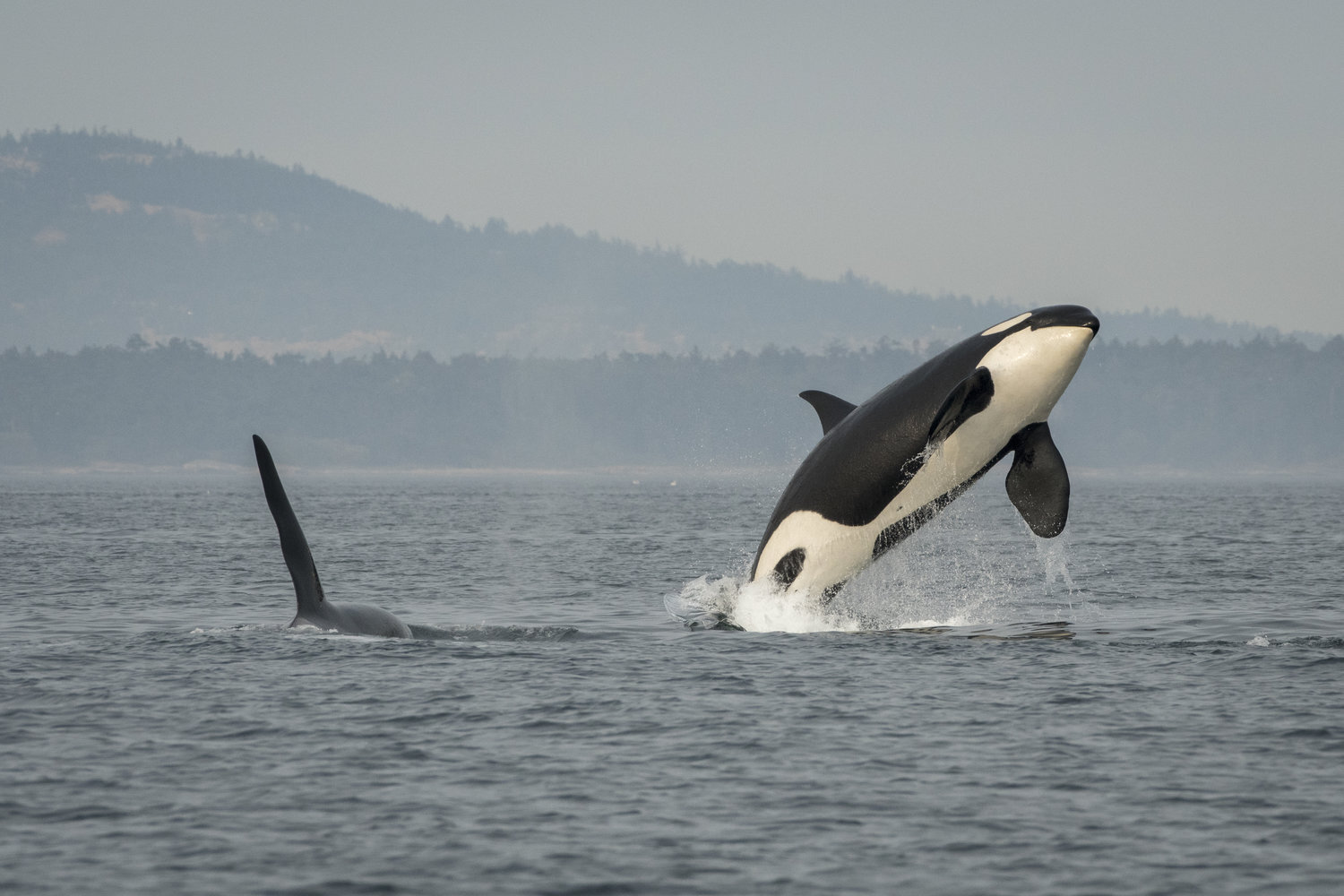Southern Resident Killer Whales
Here in the Salish Sea, there are three distinct subtypes (or ecotypes) of killer whales. The most well-known are the Southern Resident killer whales (Orcinus Orca). The other ecotypes are Transient and Offshore killer whales. Southern Residents live in close-knit, matriarchal social communities led by adult female members. We can differentiate Southern Resident killer whales from other ecotypes based on their individual markings, behavior, genetics, and their preferred prey. In 2005, Southern Resident orcas were listed as endangered on the Endangered Species Act. The three main factors that have caused their decline are their dwindling preferred prey, Chinook salmon, disturbance by vessels, and increasing levels of contaminants in their blubber.
DID YOU KNOW?
There are three distinct pods of Southern Resident killer whales known as J, K, and L pods. In just 5 years from 1996 to 2001, their population decreased by 20% and they are currently endangered in both the U.S. and Canada.
These marine mammals communicate acoustically with one another to hunt and navigate the ocean. Sharing the ocean with vessels such as ferries, commercial fishers, and whale watching boats, there has been an increase in noise level that carries underwater. Such noise can interfere with orcas’ ability to communicate with one another, causing them to speak louder in the presence of boats on the water.
Southern Resident killer whales live in close proximity to humans and have been shown to have antimicrobial resistant bacteria in their respiratory tracts.
Southern Resident killer whales communicate in calls that are specific to their pod. There are three distinct classifications of communication: clicks, whistles, and pulsed calls.
As the seasons change, so do the feeding habits of the Southern Resident killer whales. Chinook salmon make up half of their diet in the fall and nearly 100% in spring.
While Southern Residents spend some of their life in the Salish Sea, they range from the outer coast of Vancouver Island to California.
Lack of available Chinook salmon causes significant stress on their reproduction, specifically during the late stages of pregnancy, with 69% of recorded pregnancies between 2008 to 2014 being unsuccessful.
Photo by Katy Foster. Banner photo by Gale Swigart.


